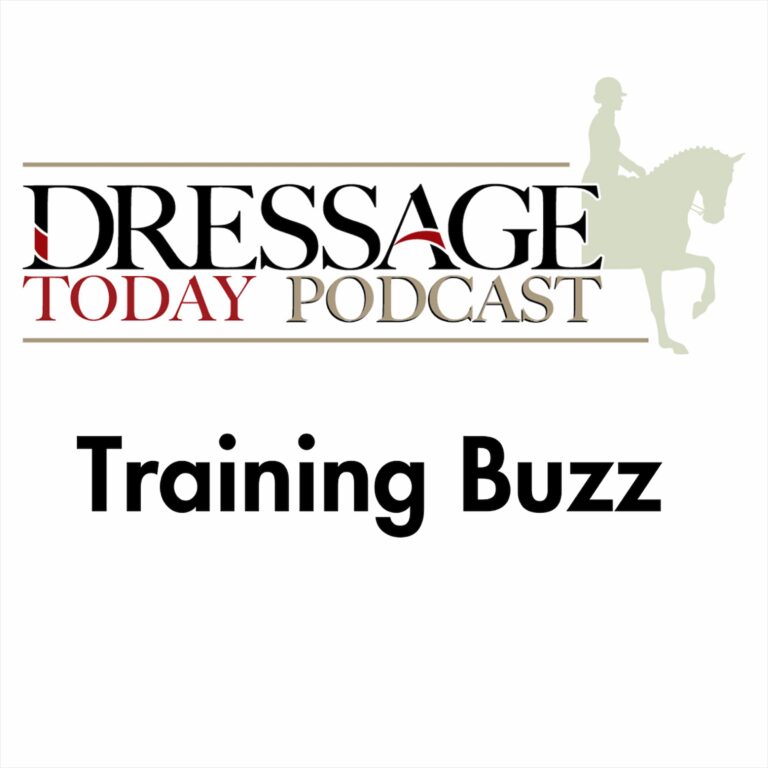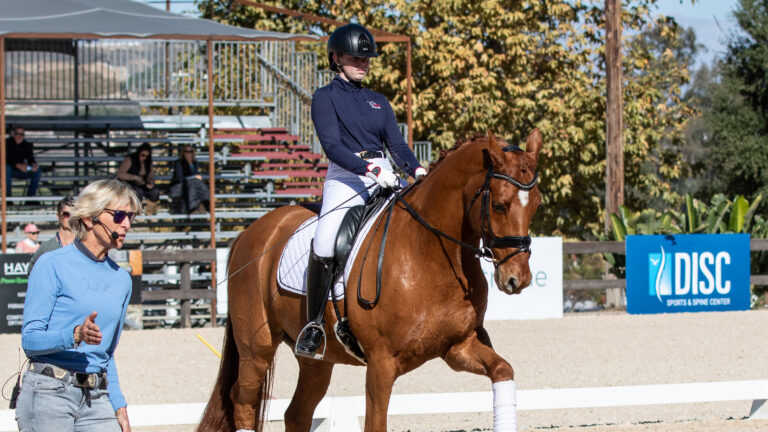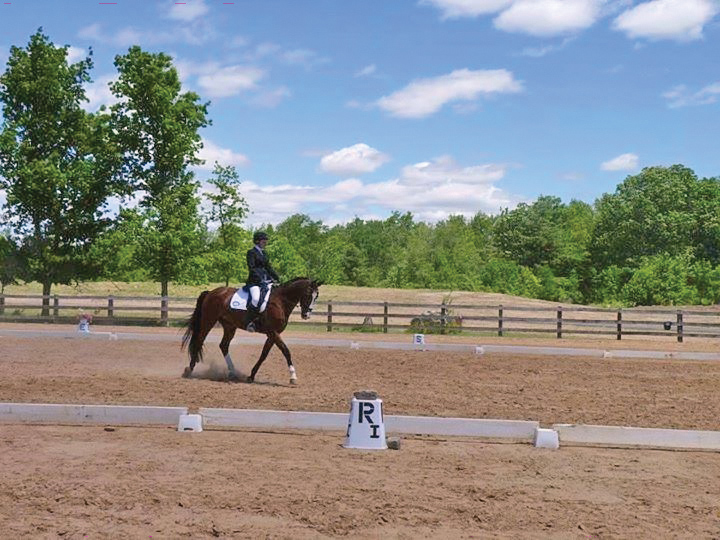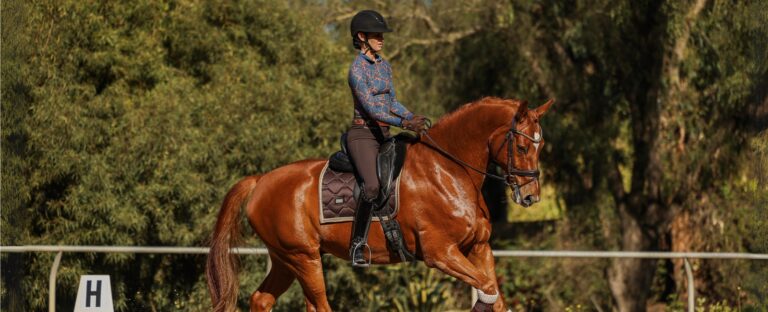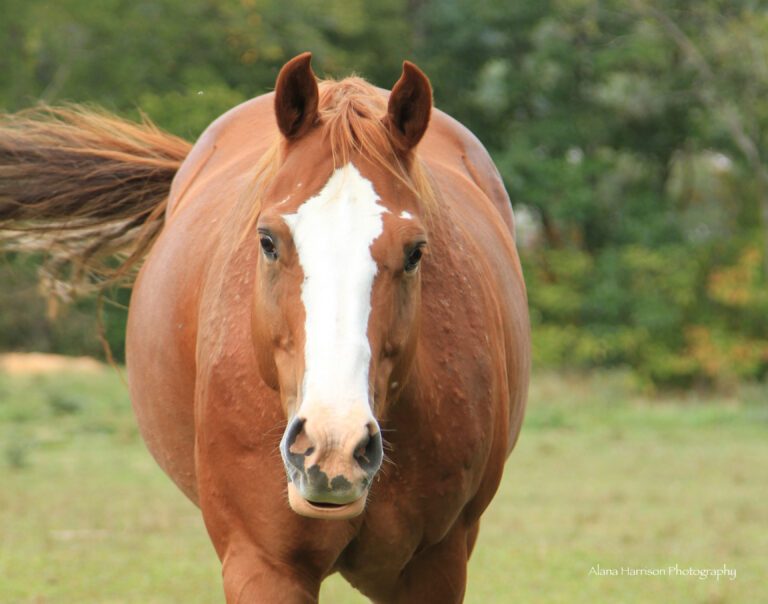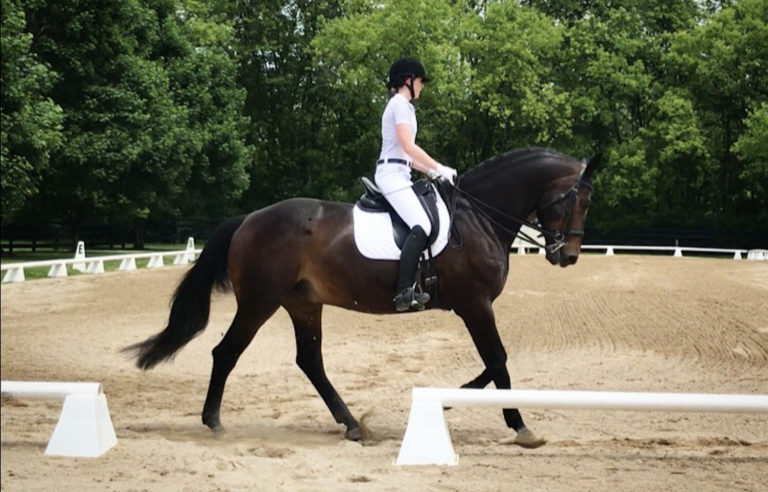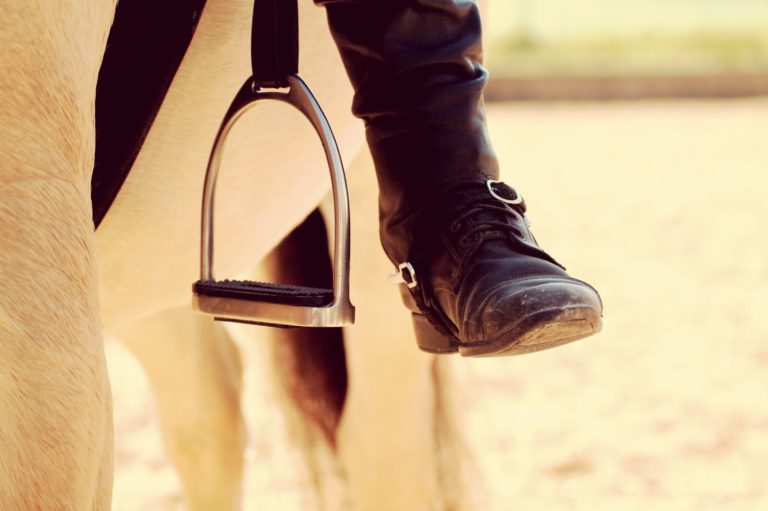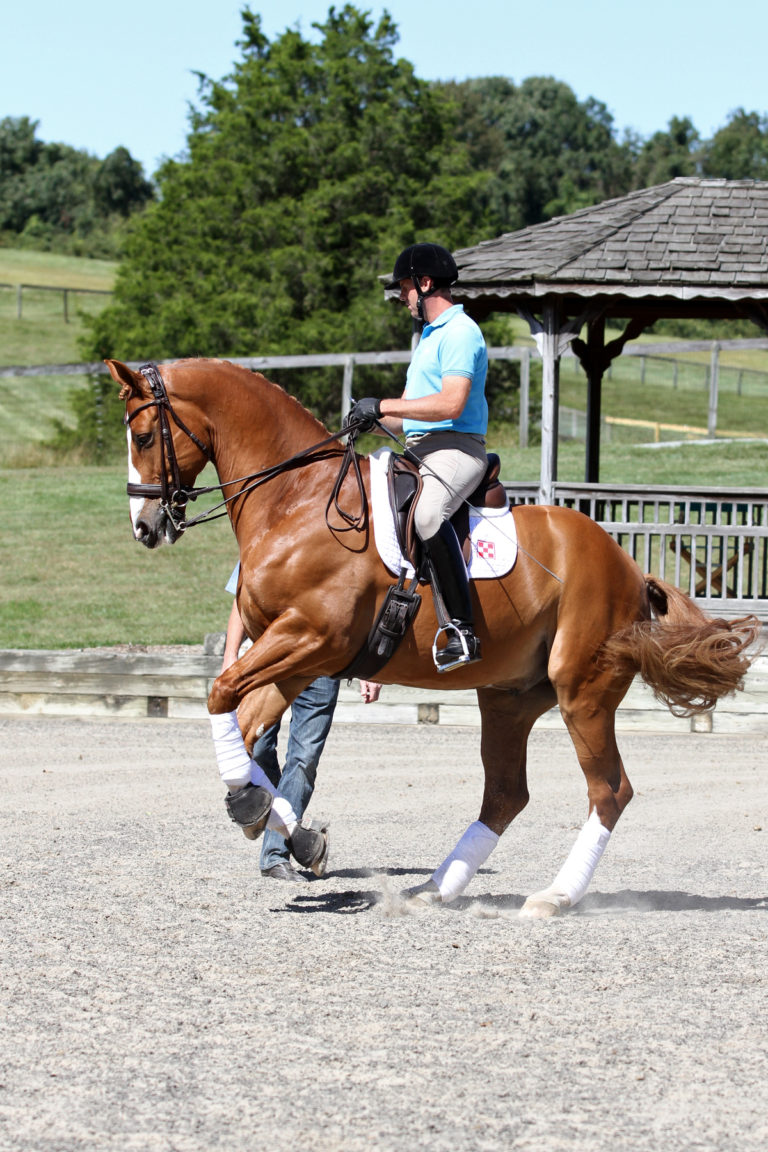This picture shows Laura Oliver riding her 17-year-old horse Brontesaurus. “Bronte,” as she calls him, is a Percheron/Thoroughbred crossbreed, and he looks as if he got the best from both sides. They have been together for 14 years and are showing Third Level.

© Rebecca Sturdy
To be with a horse over such a long time builds a strong relationship. You can see in the picture that they trust each other and are focused on their task. What struck me first was how special it is to see such a big horse being ridden by such a light rider, and it looks like Laura is riding with very light aids.
In this photo, I can see that the canter is round with good engagement from behind. To be critical, horse’s neck could reach out a little more and he could carry his nose more in front of the vertical.
Sitting Deeper and Giving Forward
Laura is sitting light—almost too light. Her seat could be connected deeper into the saddle. Her upper body has a slight forward tendency, which I prefer to sitting too far behind. But this sitting forward does not allow her to push with her arms toward the horse’s mouth in the landing phase, which would help her encourage Bronte to reach forward to the bit.
To understand and feel the connection of sitting deeper and the forward-giving tendency of the hands, Laura should try this: Place a chair in front of a table and sit down with your hands upright on the table as if holding the reins. Without allowing your hands to move, start pushing them forward. This will cause the shoulders to push down, the chest to lift, the weight on the seat bones to shift slightly to the back and the abdominal muscles to become engaged while the feet push more with the heels into the floor.
The same exercise can be done while standing facing a wall: bend the knees slightly as if in riding position, place the knuckles of the hands against the wall and apply a gentle push forward against the wall.
The slight forward tendency of her seat in the picture reveals that if Laura gave forward with her hands now, she would tip more forward, drop the contact and not be able to support self-carriage in an uphill manner.
Laura needs to understand that “giving” the reins is not a mere forward pushing of the arms but is connected to her seat. “Giving” the reins, like in the above exercises, will make her use her weight aids and her seat more. Remember: Every half-halt finishes with giving. Giving the reins and connecting this to her body will help Laura connect deeper with her seat and control the horse more from her seat.
In the canter (like the walk), the rider needs to give the hands forward during each landing stride to allow for the horse’s natural neck movement. To truly control the horse on the seat, you need to use the giving moment of each stride, which enhances self-carriage and lightness of the horse.
The second detail I notice on Laura’s seat is a slight outside rotation of her right leg. This rotation does not allow her to fully open and stretch through her hip, and it makes a deeper connection of her pelvis difficult.
When performing the standing exercise from earlier, Laura will feel how the forward tendency of her hands can help her to ground more down to her legs and allow her to drop the heel down. In the human walking pattern, the push-off from the back leg is most effective with a slight inside rotation of the hip. This is true for the outside leg in riding, too.
Using more internal rotation and stretch of her hip, her seat will connect deeper and she will be more effective in collecting the canter.
In a training situation, I would ask Laura to canter with the reins in her inside hand and connect herself deeper into the saddle using the outside hand pulling on the back of the saddle. She should concentrate on feeling the exact moment the horse’s outside hind leg lands on the ground with her weight on her outside seat bone. It is true that in the canter, you shift the weight toward the inside seat bone, but this is only possible when pushing off the outside seat bone first.
To feel the importance of the outside seat bone, a simple unmounted exercise is helpful. Skipping the canter (pretending to canter yourself) is a great way to realize what is happening with the balance in canter. When skipping the left canter, your right leg is on the ground first and the left leg comes down later. When you skip and push most of your weight to the left forward leg, you tip more forward like a horse cantering on the forehand. But when skipping with most weight on the right hind leg, it feels more uphill and like a collected canter with more lightness in the front leg.
For the horse, this means more collection from behind and more self-carriage through the shoulders and lighter movement of the forehand.
For Laura, connecting more with her outside seat bones, opening her hip with slight inside rotation of her leg and learning the timing of pushing the hands forward in each landing phase of the canter will be the keys to further improving the canter work.
As a bonus, riding with more lightness of the forehand will hopefully help Bronte stay healthy so they can enjoy many more years together.
About Susanne

Susanne von Dietze is a leader in equestrian biomechanics. A physiotherapist, licensed Trainer A instructor and judge for dressage and show jumping, she gives lectures and seminars throughout the world, including at the prestigious German Riding Academy in Warendorf. She is a native of Germany and now lives with her husband and three children in Israel, where she competes at the international level. She is the author of two books on the biomechanics of riding: Balance in Movement and Rider and Horse, Back to Back.
This article originally appeared in the Spring 2022 issue of Practical Horseman.


